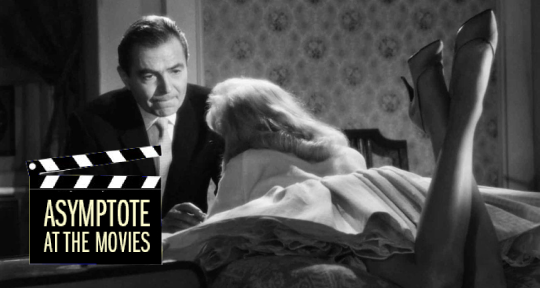Of Lolita, that startling, monumental novel that—by Vladimir Nabokov’s own words—”completely eclipsed [his] other works,” of a story that continues to enthral, shock, and conjure up long-winding debates since its 1955 publication, of this classic that stunned the world . . .
Though Lolita was originally written in English, Nabokov himself was, as Alfred Kazin said, “a man who turned statelessness into absolute strength.” In addition to being a well-respected translator of Russian poetry, he was also the one who took on the laborious task of translating Lolita back to his native language (albeit in bootleg copies, as it was banned in the Soviet Union until 1989). Though most authors would be reluctant at the thought of translating their own work, difficulties on Nabokov’s part was perhaps mediated by his translation philosophy, which was centred around the existence of a greater metaphysical language, of which all the various iterations of the same text—including the original—are fragments.
In consideration of this greater language, of which the spirit of a text surges and infuses its renditions, we must also think of Lolita as study of an immense mind as it navigates the English language anew, amidst a collision of intercultural practices, literary traditions, and theories. In choosing this subject for the latest Asymptote at the Movies, our blog editors consider not only Lolita‘s textuality, but also the “collision of interpretations” that led to its varied existences. The films, directed by Stanley Kubrick and Adrian Lyne, are supreme examples of the intertextuality, as defined by Brian McFarlane, that adopts the original novel as a resource, as opposed to the source. They are celebrations of translation as a wholly original art.
Xiao Yue Shan (XYS): It’s hard to think of an author less befitting of cinematic adaptation than Vladimir Nabokov—that indisputable master of runaway language, his generous verbosity that creates multifarious, dramatic textures . . . It defies the instantaneous appreciation for images. That is not to say that Nabokov isn’t a distinctly vivid writer (what is more lucid than that single configuration: “four feet ten in one sock”?), but that his work is the embodiment of that singular textual quality of transformation and reference—one word simultaneously impresses on the next while calling back towards the previous, a line denoting memory is startled by its knowledge of the present. The writer, in impeccable craft, moves from the tactile to the figurative to the emotional to the sensual.
As for Lolita, it was, for most us, the introduction to Nabokov and his language. I remember meeting it with avid shock and wonder—not at its subject matter, which was, by then, inoculated into public knowledge thickly—but at its incredible breadth and linguistic convolutions. Take the opening line of its fifth chapter, a beautiful and complex one that is no less or more beautiful or complex than all the lines surrounding it: “The days of my youth, as I look back on them, seem to fly away from me in a flurry of pale repetitive scraps like those morning snow storms of used tissue paper that a train passenger sees whirling in the wake of the observation car.” The reader receives the image, conjured, but how to possibly reinstate, in images, the sheer momentum and mental spell of this single sentence?
Of course, interpretation is just that, and I by no means suggest that every bit of metaphor should be incorporated into any adaptation (although, I would love to see someone try), but that—the work of metaphors, the transposition of one thing upon another, the laborious and whirlwind inference of objects into emotion and memory—is this book. Lolita has been called a love story, and it is: the cruel, malfeasant, maddening, oblivious love that is perhaps the purest distillation of the destructive id. There is no Lolita without the sheer weight of its indulgent interiors. Before we get into particulars here, how would you imagine one even starts in rendering this totem into film?
Sarah Moore (SM): Yes, there is the astonishment of how an adaptation of Lolita even got made, not least considering the censorship issues. But additionally, as you say, there is the challenge of rendering such an inimitable linguistic style into film. The first film adaption to be made, Kubrick’s Lolita in 1962, even carried the tagline “How did they ever make a movie of Lolita?” on its posters. Issues of this first adaptation were clearly centred on moral questions rather than linguistic—it was a bold move for Kubrick, who was still an up-and-coming director. Nabokov was himself more involved with this first adaptation, and wrote the original script, although Kubrick altered a lot of this later. In terms of plot, much is condensed, and the erotic aspect has to be transformed into subtext and suggestion. The second film, by Adrian Lyne in 1997, was created in a very different context and, rather than being a “remake” of the first, is definitely a new adaptation of the novel in its own right. It has clearly gone back to the text, incorporating most of the details of the plot, many exact quotations, and, most obviously, a full portrayal of eroticism. Whilst neither film can claim to completely capture the complexity of Nabokov’s Lolita, both have their own, very different merits, and have contributed to a perpetuation of Lolita as an essential work and cultural icon. I think, in rendering the novel into film, there are two important factors: Humbert as a narrator and the extent to which he is manipulating his version of events; and the tone of the novel, which is so often humorous.
XYS: Yes, where Nabokov approaches grandiloquence, Kubrick opts for tongue-in-cheek, and Lyne steeps his film in pathos. The three versions of Lolita that emerge are triplets raised in three different countries; their formative structures may resemble one another, but they have different knowledges, preferences, and, of course, languages.
Nabokov opens with poetry. “Lolita.” Kubrick and Lyne opt fittingly for mise en scène. Both begin at the end: Kubrick’s Humbert Humbert is approaching the place in which he will become a murderer, and Lyne’s is drifting away from it. Both men drive (Kubrick’s notably faster), and the mood is set by the time the camera lands on their faces; Kubrick is an entertainer, and Lyne is an aesthete. In the former’s film, Humbert strides into the ornately dilapidated mansion of Clare Quilty, looking grim but lucid, indulging his victim in a rather heartless ping-pong game before announcing his intentions. The scene is quite funny, mostly due to Quilty’s neurotic monologuing, and attends more to the aggrandized, garrulous qualities of Nabokov’s prose. In Lyne’s version, Humbert has killed Quilty, and now drifts along a luridly green country road, dazed and exhausted, weakly tempting at suicide by weaving between lanes, narrowly escaping an oncoming truck. The music swells.
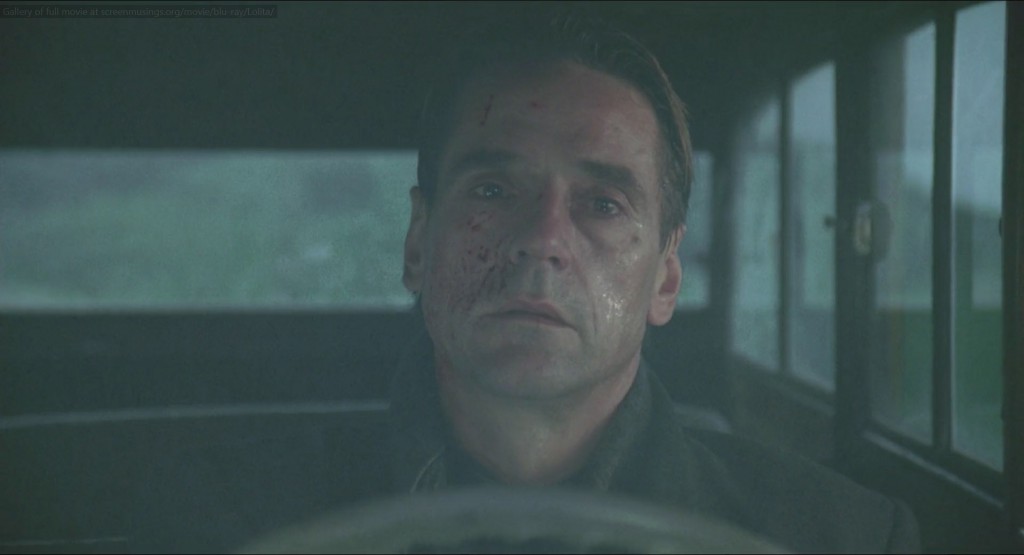
Michael Wood, in his review of Lyne’s film, said that it is “in particular . . . Humbert’s movie.” And Lyne has been more faithful to Humbert’s (self-told) narrative than his predecessor. He chooses to introduce Annabelle—the first “nymphet” who spurred the man’s eventual overwhelming desire for such young women—and therefore contextualizing Humbert’s desire foremost with romance, as opposed to deviation. By ushering in this element of psychology, Lyne’s and Nabokov’s protagonists both attempt to paint themselves as otherwise moral men embroiled in the consequences of a first tragedy—they are righteous only in the sense that they could perhaps reclaim what fate once stole from them, that they seek only the resurgence of a first love. “But how his heart beat when, among the innocent throng, he espied a demon child . . .” As educated and purveyors of the human soul (they are, after all, literary men), both Humbert Humberts remain analytical even as they are driven to fantasy.
Kubrick does not condone such mercies. In a most overt symbolism (can it even be called symbolism?), his Humbert Humbert conducts the murder that ushers in the narrative by shooting Quinty through the painted portrait of a girl. And we do not get the sympathizing effect of tender music and a long, sorrowful drive through pastoral hills. There is no mention of Annabelle, here nor elsewhere. We are, throughout this film, encouraged to mock and denigrate the deplorable character and the depths he sinks to in order to achieve the object of his desire—a desire that is never assumed beyond lust. This film is a comedy.
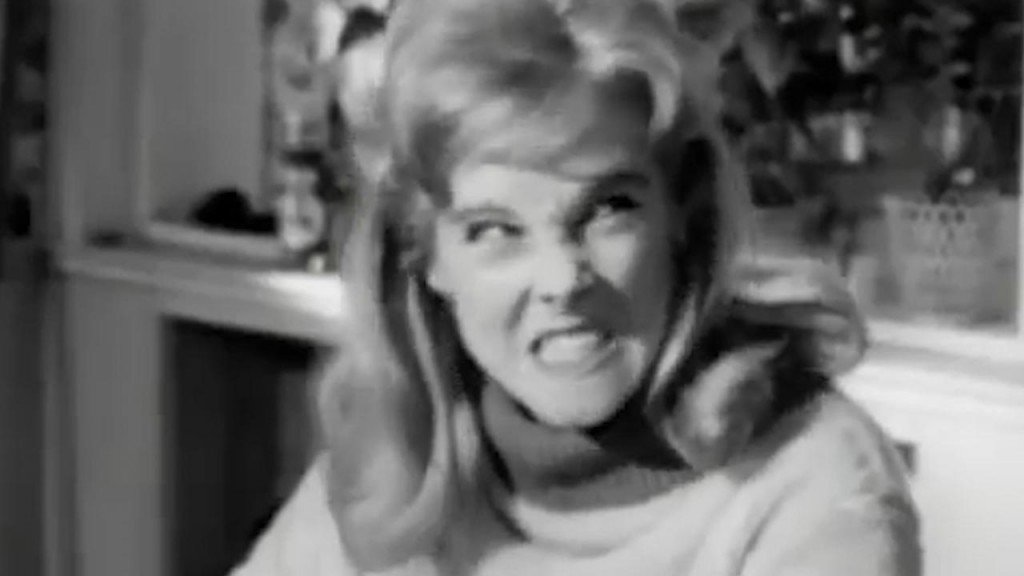
As the chorus of those who defend Lolita goes—not all art is palatable. Yet both filmmakers, inevitably under the pressures of their times—seek to make it so, calling back to what you said about the film industry’s “moral concerns”. Kubrick, by setting the stage for derision, and Lyne, by upping the melodrama and downing the superego. It seems to me that neither were entirely successful in this, because Nabokov’s Lolita is funny without slapstick or ridicule. It derives humour from hyperbole (“By God, I could make myself bring her that economically halved grapefruit, that sugarless breakfast.”) and absurdity (“A man having a lavish epileptic fit”). It is also melodramatic and overly keen of morality by way of an intimate soliloquy. We are inside Humbert Humbert’s head, in a keen awareness of evasion. Yet, in Lyne’s film—and perhaps, in all films—we only participate in the act of voyeurism, and never perpetrate it. There is always a separation.
SM: I agree that Lyne’s film is much closer to “Humbert’s movie.” Not only is it constructed with his frequent narrative voiceovers, but these voiceovers keep the confessional tone. The famous “Ladies and gentlemen of the jury” is the more overt voice in Lyne’s film, which is also astonishingly wistful. Jeremy Iron’s Humbert is much more conscious of the particular chain of events, their development, and their (as he would defend it) inevitability. As you mention, Annabel’s story is told very early, immediately creating the possibility of viewing Humbert as a victim of fate: “But there might not have been a Lolita at all had I not first met Annabel.” The story is taken right back to the beginning and blame is almost evaporated, or merged with life’s adversities. Nobody can be blamed for Annabel’s death—it was one of the great misfortunes that life encompasses—and so, the tone of the film is sentimental, nostalgic, and even attempts to be more romantic. Ennio Morricone’s sublime score enhances this: one can see even by Lyne’s choice of composer the epic, profound quality that he wanted his version to have.
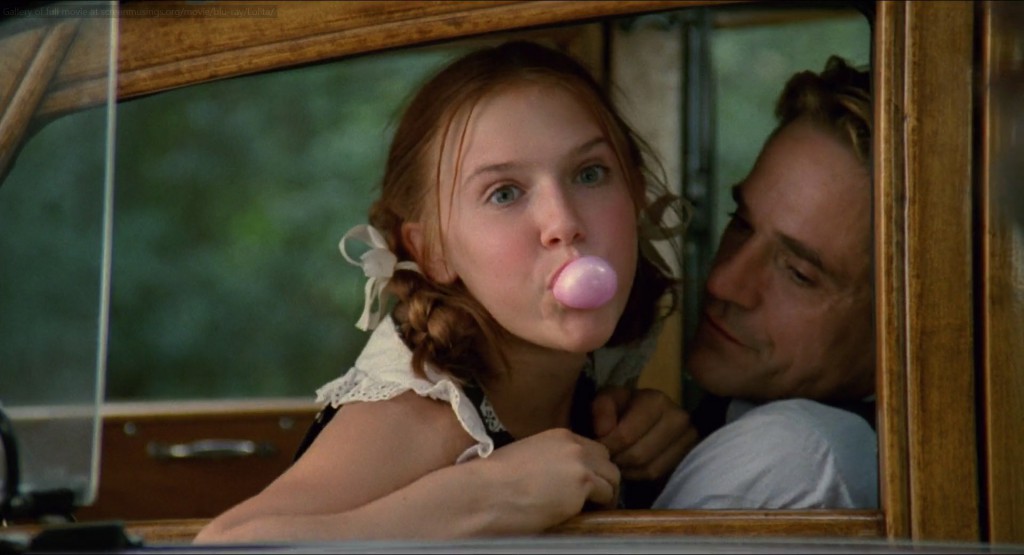
You’re right to mention comedy—both films are very funny—but employ different methods in achieving this. Kubrick’s retains some of the parody present in Nabokov’s novel and uses farce to undermine Humbert’s control, such as that first scene in the struggle between Humbert and Quilty. With greater censorship constraints, Kubrick also converts sex into innuendo, much more akin with Nabokov’s frequent wordplay and punning, whereas some of Lyne’s humour is incredibly subdued, slightly absurd, and with deadpan delivery.
For instance, a shot very early in the film in which Humbert stands before the remains of a collapsed house, only its chimney standing, and the ruins seemingly still smoking. This was the house that he should have stayed in but, as Humbert’s voiceover tells us, “on arriving I found that it was no longer there.” No further explanation is provided, and this brief, comical scene makes his subsequent presence in Mrs Haze and Lolita’s house much softer—once again a bizarre, amusing twist of fate. The entire opening of the film presents us with what could have been, what should have been, but what wasn’t allowed to be, until the camera pans slowly over Lolita in her first appearance, water-drenched and lying in the grass—Humbert’s acquaintance with her can only appear as inevitable. Later, the humour is of a darker irony; a shot of a sign reading “Children under 14 free”; Humbert’s admonishment by Lolita’s headmistress for not having, in his role as her “father”, provided sufficient sex education. The film is also full of Lolita’s pranks, which both emphasise her childishness and give Humbert’s character an aspect of being maladroit. Humour is generally more subdued in Lyne’s film and the overall tone is much more sentimental.
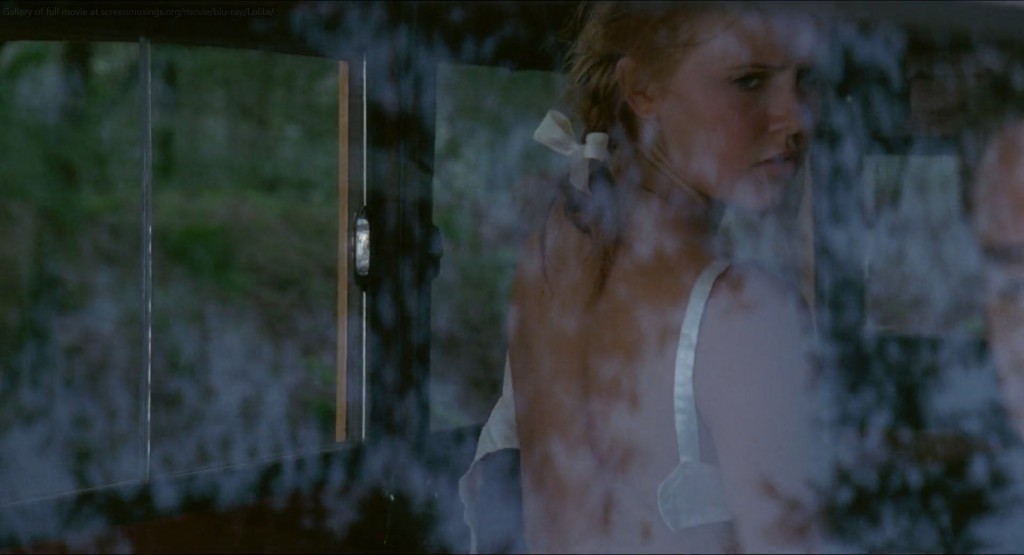
XYS: The films and novel juggle that classic idea of art as a conduit for sympathy in various ways. Nabokov’s Lolita is the antithesis of it. I find it impossible that one can close the covers of Lolita feeling sympathy for Humbert Humbert—perhaps another distinction between texts and images, as even when language places us directly at the epicentre of a character’s mind, it is, I believe, a less immediate tangibly emotional connection than that which is stimulated by watching the feelings being enacted upon someone’s visage, seeing someone laugh, yawn, or weep. There are, in Nabokov’s Lolita, tones of empathy; one can understand his helplessness, his yearning, his tortured horror at himself, but understanding is not a vehicle for tolerance, nor is it one for pity, or any remote kindness. Understanding is simply understanding. To feel empathy—to feel the pain of another—does not automatically insinuate that you want them to stop feeling pain. One can intuit that, if one feels that they deserved the pain, it might even be quite nice to be intimately aware of just how much pain they feel. In the films, the undeniable affectations of sorrow and helplessness on the part of Humbert Humbert are much less cautious.
SM: Yes, I don’t think that many could feel sympathy for Humbert and I don’t think that was Nabokov’s (or Kubrick’s and Lyne’s) intention. As Lionel Trilling said, “Humbert is perfectly willing to say he is a monster; we find ourselves less and less eager to agree with him.” Humbert’s openness and his confessional tone do not lead us to forgive him, or as you say, to feel sympathy for him. There are two seductions at play: that between Humbert and Lolita, but also the one between Humbert and his audience. He is trying to seduce us into his sympathy but is unsuccessful. And ultimately, he even condones himself. I also find it redundant to consider whether the story is a defence of pedophilia or not. Above anything else, the novel and its adaptations treat topics that are worthy of consideration: obsession, power structures, desire, corruption, lack of love. Whilst it is often tempting to see Humbert as the only true protagonist, we mustn’t forget that there are other relationships being played out, and most importantly, the fact that these relationships are almost always disappointing or unsatisfying. There is the initial childhood romance between Humbert and Annabel that is cut short; Charlotte Haze’s unrequited affection for Humbert; Lolita’s complicated relationship with her mother; and her eventual abandonment by Clare Quilty, the only man she claims to truly love.
Yes, Humbert’s mad obsession for “nymphets” is at the heart of the plot, but these other relationships are there, all united by the overriding theme of exploitation and power. I think Lyne’s film traces the power struggle well, as both Humbert and Lolita become conscious of exactly what they need, and exactly what they offer, in the relationship. It can of course be seen most overtly in the pocket money that Humbert offers, which, as it increases, represents both his hold over Lolita but also the means by which she will eventually escape him. The increased sensuality and explicitness of Lyne’s film also highlights this; several scenes show sex as an actual struggle, a battle played out in bargaining. Lyne has often been criticised for presenting a more sexualised version of Lolita’s character—she herself the seducer of an “innocent” Humbert; he has also been called chauvinistic. His Lolita is certainly more sexual, but I think that she is simultaneously more developed as a character. In fact, she is at once extremely sexual and extremely childlike, and Dominique Green skillfully blends the two.
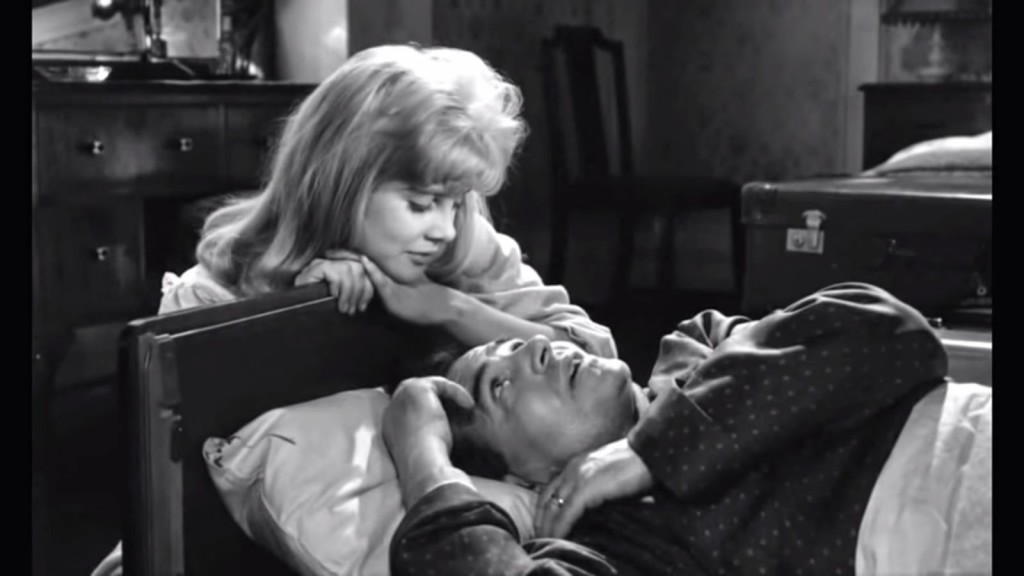
XYS: On the topic of depictions, that fascinated me about both films was the portrayal of Charlotte Haze, Lolita’s mother. Appropriate to Kubrick’s tone, she in his film was too an object of mockery. Painfully flirtatious and unaware of social cues, petty and prone to bursts of inappropriate sentiment—I actually found her, overall, quite charming, as I always find bold women (or, as Charlotte’s love confession to Humbert professes: “a passionate and lonely woman”). Perhaps my opinion is of the minority, but she offered, it seemed to me, the charm in a cast of characters devoid of personality beyond agenda. In a brilliantly concocted dance scene, she takes the advantage of a twirl to steal the arm of her male prey; it’s her sheer lack of traditional shame that pains Humbert, and his masturbatory attempts at virtue. It also goes far to place the deep fault of men who love helpless creatures. They fear a feminine authority of sexuality, of aggression in the opposite sex. Humbert loves Lolita first because she is an embodiment of purity and innocence—and therefore, of submission. As Simone de Beauvoir said: “Any self-assertion will take away from her femininity and her seductiveness.”
Charlotte’s role in Kubrick’s film is to play in direct opposition of her daughter; her transparent and exaggerated methods of seduction is nullified by Lolita’s careless charms. In Lyne’s film, then, when Charlotte occupies much less screen time, the narrative trajectory casts her aside in favour of the Annabelle factor. Lolita is much more childish in Lyne’s rendition, retainer and all. The seductive gaze of the camera casts her in glowing, perfect light. There is no other feminine object; Charlotte is never inappropriately flirtatious, she largely occupies the trope of a bratty and ineffectual mother, depriving the film of an eventful woman character.
In all films, each character is keenly present to serve a purpose. Sometimes, as in Lyne’s Lolita, the purpose is simply to fulfill a step in the narrative’s trajectory. Both films perpetuate tired stereotypes of women, and Nabokov’s Humbert Humbert is no less brutal: “She was, obviously, one of those women whose polished words may reflect a book club or bridge club, or any other deadly conventionality, but never her soul”. But the physical presence these iterations of Charlotte take upon the screen is what distinguishes these two films most vividly for me, and does much to establish their respective perspectives. For Kubrick, we are an audience. For Lyne, we are Humbert Humbert. He hardly ever noticed “the Haze woman.”
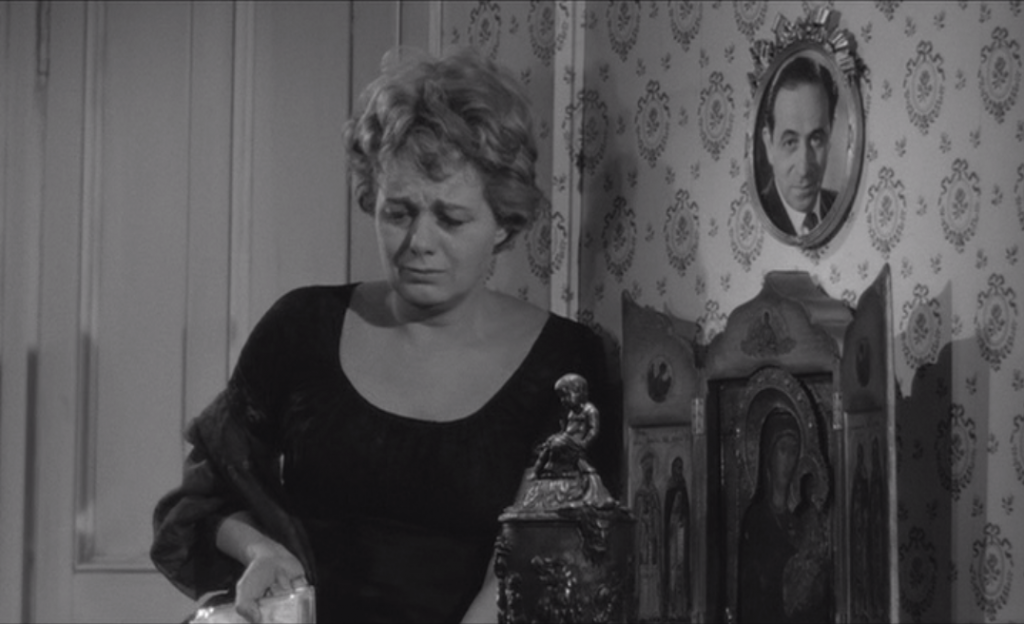
SM: She is certainly a mistreated character in the novel and the films: her personality ridiculed, her death devoid of any emotion (except perhaps a sense of victory on Humbert’s part). I think that Charlotte Haze’s character is portrayed much more negatively in Lyne’s version, and she is very much the obstacle that stands between Humbert and his object. This can lead to some interesting scenes, such as where all three sit on a swinging bench, Lolita very clearly spoiling Charlotte’s attempt at seducing Humbert, and where the camera focuses on the rapid, minute details of touch and suggestion in this complex exchange. Yet, her predominant role seems to be to complain, to nag, to apologise for Lolita’s behaviour. She is therefore cast as both very ignorant and very unwanted: we see her exactly as Humbert sees her. As you say, in Kubrick’s film she provides a contrast to her daughter, a contrast which, in Lyne’s film, seems to be embodied in the childish/seductive characteristics of Lolita herself.
XYS: It seems to me that the true tragedy of Lolita lies in its narrator’s reduction of femininity to only those qualities which would prick the male libido. Both films failed to acknowledge this crucial factor—the demand for female debilitation—in established male-female eroticism: a consequence of their time, their material, or perhaps the fact that both directors are men. This is perhaps the aspect of textuality that is less apt to be conceived in cinema; where Nabokov derives sensuality more so from the sheer trick of words cooperating with one another—with the narrator’s own deranged visions of his object of affection—the film can only co-opt such a sensation of desire from putting her on display.
Lolita, the love story. It brings to mind a vision, courtesy of Rilke, who sensed with a particular urgency the fatal injustices of desire:
Someday, there will be girls and women whose name will no longer mean the mere opposite of the male, but something in itself. Something that makes one think, not of any compliment and limit, but only of life and reality, the female human being. This advance will, at first much against the will of the outdistanced men, transform the love experience, which is now filled with error, will change it from the ground up, and reshape it into a relation of one human being to another, no longer of man to woman.
Xiao Yue Shan is a poet and editor, born in Dongying, China and living in Tokyo, Japan. Her poetry chapbook, How Often I Have Chosen Love, was the 2018 winner of the Frontier Poetry Chapbook Prize. She currently works with Spittoon Literary Magazine, Tokyo Poetry Journal, and Asymptote. Her website is shellyshan.com.
Sarah Moore is a bookseller and editor from Cambridge, UK. She currently lives in Paris and is an Assistant Blog Editor for Asymptote.
*****
Read more on the Asymptote blog:

